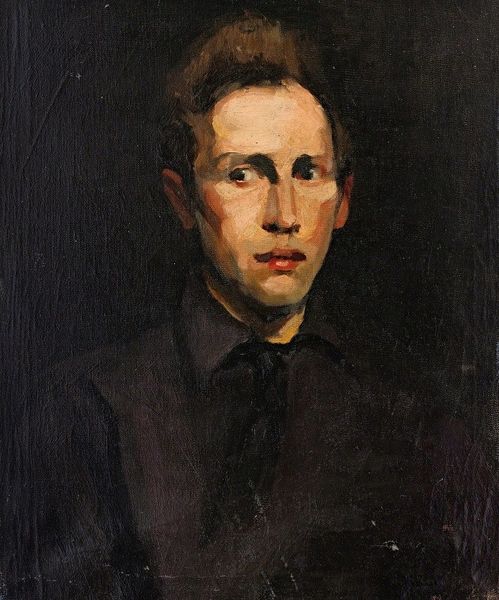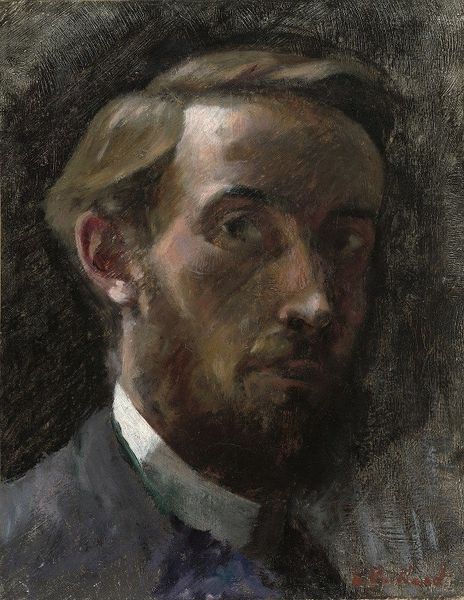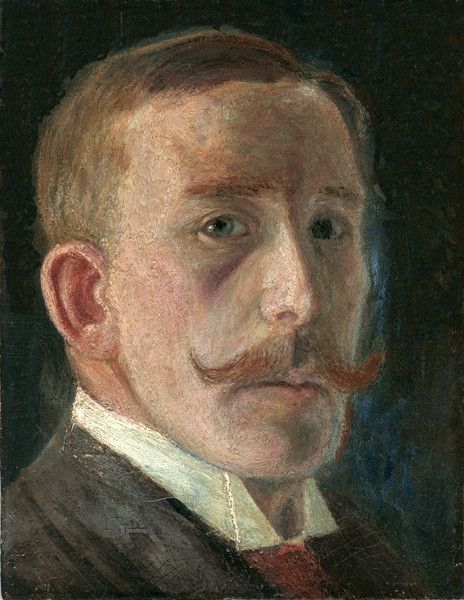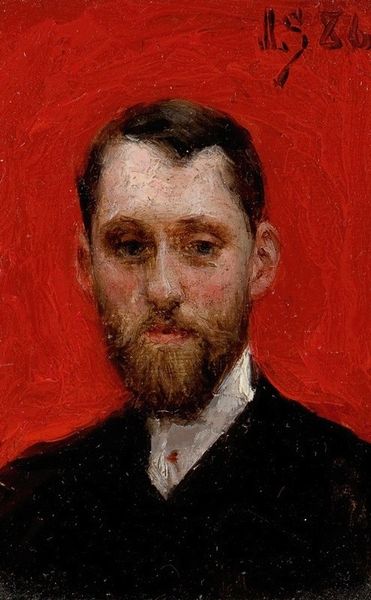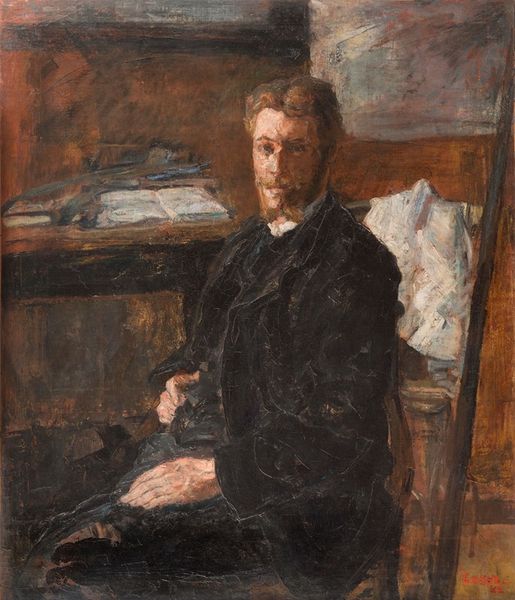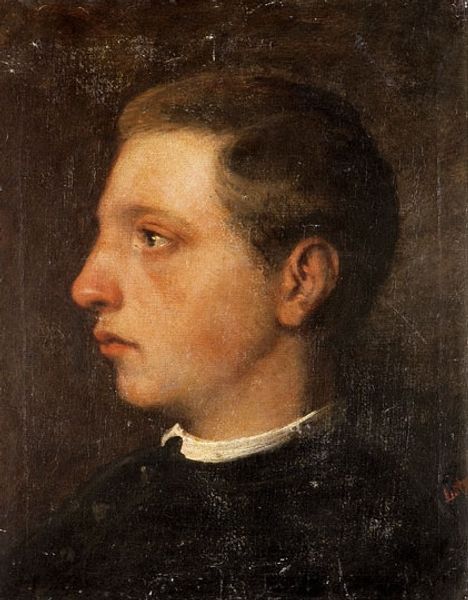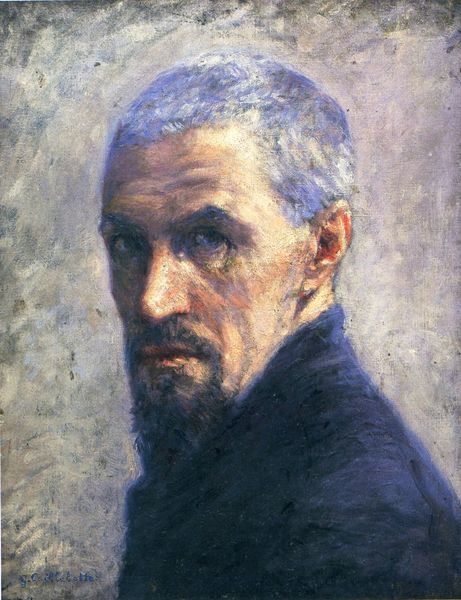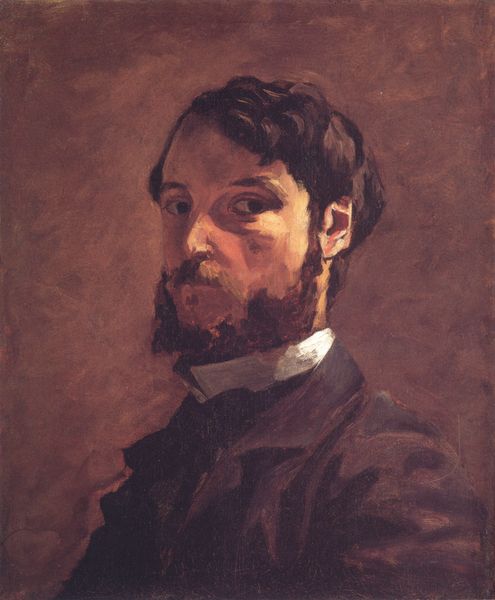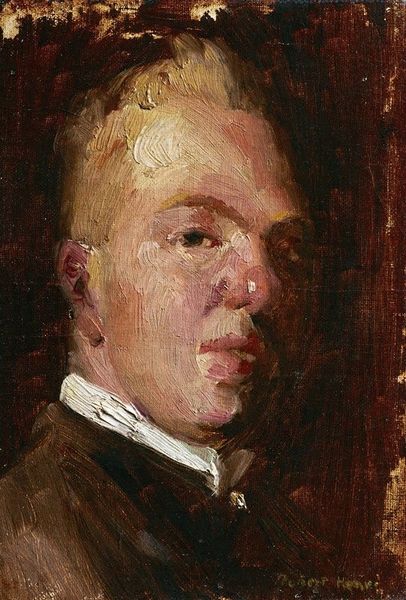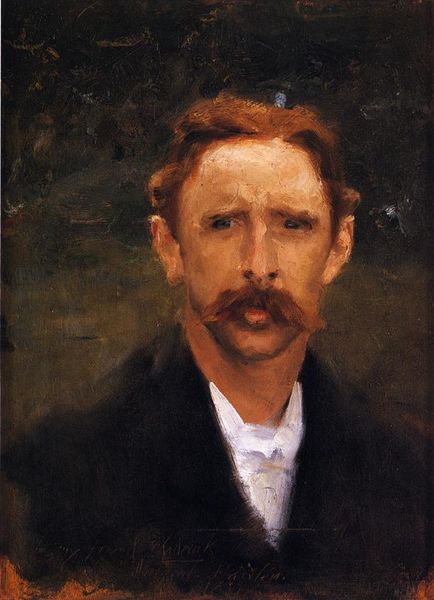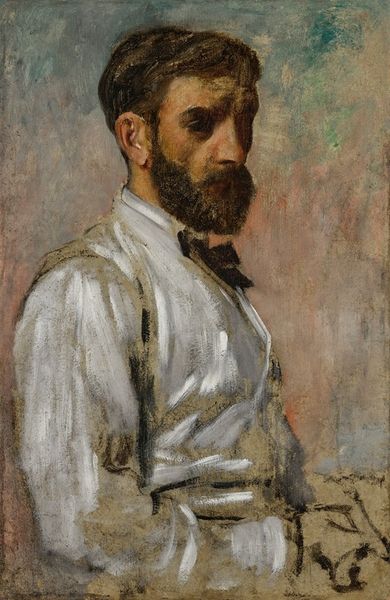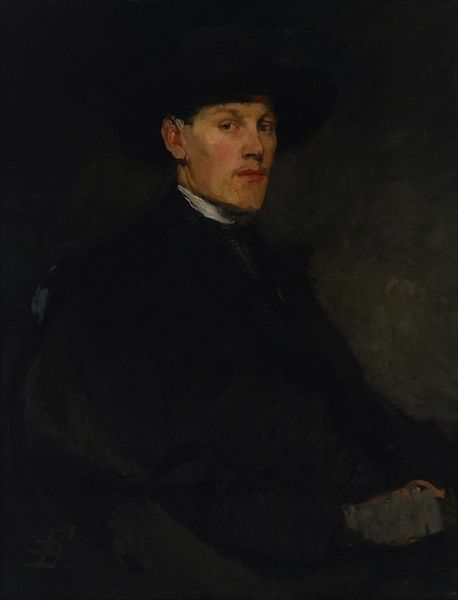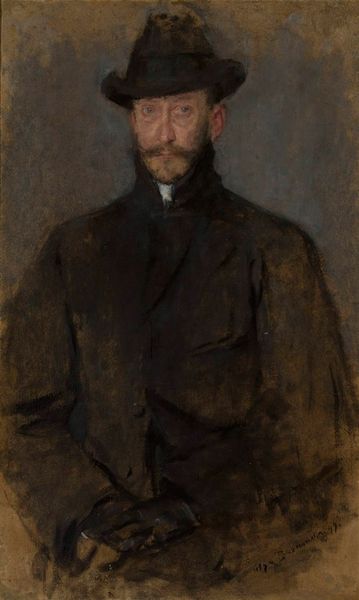
oil-paint
#
portrait
#
figurative
#
impressionism
#
oil-paint
#
figuration
#
oil painting
#
post-impressionism
#
portrait art
Copyright: Public Domain: Artvee
Curator: Welcome. Before us hangs Henri de Toulouse-Lautrec's oil on canvas portrait, "Albert," created in 1887. Editor: There’s an immediate softness. The blending of colors gives it a dreamy quality, even melancholic despite the confident posture. It feels less posed, more observed. Curator: Note how Lautrec constructs form through color rather than precise lines. Observe the juxtapositions: cool tones in the light catching his forehead offset by the warmer palette around the eyes and mouth. How do these create depth? Editor: The clothing especially feels grounded. I’m thinking about the garment workers of the time, the production of that fabric. Was this off-the-rack, tailored, what kind of social meaning does the sitter wish to display through these conventional markers of class? The quick, almost rough rendering gives the waistcoat a substantial, palpable weight. Curator: And yet that "roughness," as you call it, serves to animate the surface. The painting privileges subjectivity, the artist's fleeting impression. The materiality of the paint is less about capturing realism, and more about the raw aesthetic qualities. Editor: But consider the material reality of being an artist, Lautrec procuring his pigments, the price of canvas, his labor invested here. Did "Albert" compensate him fairly for his skill? Or what about how the very process shapes and reveals social structures that might otherwise stay invisible? Curator: Precisely the dichotomy that underscores our discussion: surface versus depth, the seen versus the unseen, which Lautrec seems keen on obscuring within layers of color. The blurred quality offers the viewer access through suggestion, not literal transcription. Editor: Right. By emphasizing process and materiality, Lautrec is implicitly making an argument about value, artistic skill, and the portrayal of individuals. These artistic choices reveal aspects of their place in the world and what he hopes to portray. Curator: Very well observed. It underscores the complexity beneath the surface, reminding us that every brushstroke, every choice of pigment, engages in this constant dialogue between perception and interpretation. Editor: So, what at first seems like a simple, softly rendered painting really opens into this broader view of art's power to portray status and the production processes behind both subject and artwork.
Comments
No comments
Be the first to comment and join the conversation on the ultimate creative platform.
